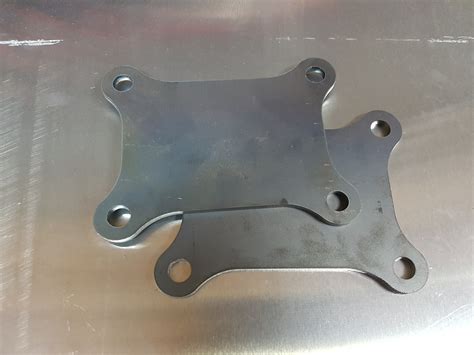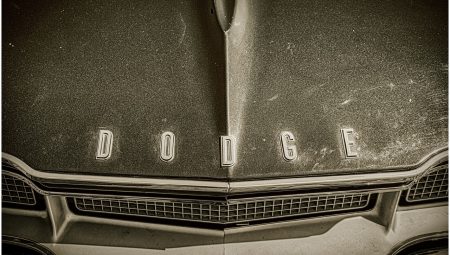Discover LS engine mount plates, their benefits, installation process, compatibility with various LS engines, and a comparison of different options available.When it comes to enhancing the performance and reliability of your LS engine swap, the importance of high-quality engine mount plates cannot be understated. These essential components serve as the foundation for securing your engine, ensuring it stays in place under the rigors of driving. In this blog post, we will delve into what LS engine mount plates are and explore their numerous benefits, from improved stability to vibration reduction. We’ll walk you through the installation process, highlight compatibility with various LS engine configurations, and compare different mount plate options available on the market. Whether you’re a seasoned mechanic or a DIY enthusiast, understanding LS engine mount plates will equip you with the knowledge to make informed choices for your build. Let’s dive in!
What are LS engine mount plates?
The LS engine mount plates are essential components designed specifically to facilitate the secure and stable installation of LS engines into various vehicle chassis, offering a robust solution that accommodates the unique dimensions and specifications of LS engine models, which are known for their versatility and powerful performance.
These plates are typically made from high-strength steel or aluminum, ensuring durability and resistance to the vibrations and stresses that come with high-performance driving, and they are manufactured to precise tolerances to allow for a perfect fit, which is crucial for maintaining the alignment of the engine and transmission during operation.
In essence, the LS engine mount plates serve as a critical interface between the engine and the vehicle’s chassis, and choosing high-quality mount plates can significantly simplify the LS engine swap process, providing enthusiasts and professionals with the peace of mind needed to focus on optimizing performance rather than worrying about the integrity of their engine installation.
The benefits of using mount plates
When it comes to engine swaps and upgrades, particularly with the popular LS engines, the use of mount plates provides an essential solution for achieving a secure and aligned fit, which is crucial for both performance and safety. These mount plates are specifically designed to facilitate the installation of LS engines into various vehicles without the need for extensive modifications to the chassis or engine bay, allowing for a relatively straightforward process that saves both time and effort while ensuring that the engine is firmly anchored in place.
One of the prominent advantages of using mount plates is the versatility they offer; these plates come in various configurations to match a range of vehicle types and LS engine models, enabling enthusiasts to effectively customize their setups based on specific performance goals or aesthetic preferences. Furthermore, quality mount plates are engineered to provide optimal vibration dampening and reduce engine noise, contributing to a smoother driving experience, which can be particularly beneficial for those who enjoy long rides or daily commuting in customized vehicles.
Additionally, the installation of mount plates can prove to be cost-effective when compared to other methods of engine mounting, as they often eliminate the need for expensive custom fabrication and labor costs typically associated with traditional motor mounts, thereby making LS engine swaps more accessible to a broader audience of car enthusiasts and hobbyists. In summary, the use of mount plates plays a crucial role in simplifying the engine installation process while enhancing performance, comfort, and overall vehicle function.
Installation process of mount plates
Installing LS engine mount plates is a critical step in ensuring that your engine is properly secured and positioned within your vehicle, and while the process may seem daunting at first glance, it can be accomplished with the right tools, patience, and a clear understanding of the basic steps involved. Begin by gathering the necessary materials, which may include mount plates, bolt kits, and an assortment of hand tools such as wrenches, sockets, and a torque wrench; it’s imperative to have everything at your disposal in order to streamline the installation process and avoid unnecessary delays.
Before diving into the installation itself, it’s essential to prepare the workspace adequately; this involves ensuring that the vehicle is on a stable platform, preferably a lift or strong jack stands, as this will grant you the access needed for a thorough job. Once the vehicle is properly secured, locate the existing engine mounts and remove any components that may obstruct access to the mount plate area, this can often include exhaust components or cross members depending on the specific layout of your engine bay.
With the workspace prepared, position the new mount plates in their appropriate locations; typically, this requires aligning the plates with the pre-existing holes in the frame. Secure the plates with the provided bolts, making sure to follow any specific torque specifications listed in the manufacturer’s documentation, as ensuring a proper fit is crucial for the overall performance and stability of the engine once it’s operational. Finally, after everything is in place, reassemble any components you had removed previously, and perform a thorough check to confirm that all tools and loose items are accounted for before lowering the vehicle and taking it for a test drive to ensure that everything is functioning as intended.
Compatibility with different LS engines
When considering the compatibility of LS engine mount plates with various LS engines, it is essential to recognize that the LS engine family, which originated from General Motors, is comprised of a diverse range of engines, each designed with unique specifications and configurations, which inevitably impacts the type of mount plates that can be utilized.
For instance, when exploring the compatibility of mount plates with specific LS engine models such as the LS1, LS2, LS3, and LS6, enthusiasts often note that while certain plates are tailored explicitly to fit these engines seamlessly, others may require modifications or specific installation techniques to ensure that they function correctly while providing the required support and durability.
Moreover, factors like the year of manufacture, the type of vehicle, and whether the install is in a new build or a retrofit application can further influence the selection of mount plates, and as a result, it’s not just about matching the engine but also taking into consideration the chassis and transmission options to find the most compatible solutions available on the market.
“Compatibility is key when working with LS engine mount plates, as the right fit ensures optimal engine performance and longevity.”
| LS Engine Model | Compatible Mount Plates |
|---|---|
| LS1 | Manufacturers A, B, C |
| LS2 | Manufacturers D, E, F |
| LS3 | Manufacturers G, H, I |
| LS6 | Manufacturers J, K, L |
Comparing different mount plate options
When it comes to enhancing the performance and positioning of your LS engine, a crucial component that should not be overlooked is the engine mount plate, which serves as the foundational support for the engine, allowing for stable and secure placement in the chassis of your vehicle while also providing an opportunity for adjustments to achieve the most effective engine layout.
There are several types of mount plates available, each with its unique design specifications and intended applications, ranging from solid mount plates which are built to minimize engine movement and vibration, making them ideal for racing environments, to rubber-isolated mount plates that provide a balance between performance and drivability by absorbing vibrations while still maintaining solid engine positioning.
Furthermore, when comparing different options, one might consider important attributes such as material composition, typically aluminum for lightweight performance and durability, versus steel, which offers strength but at a heavier weight, along with the ease of installation and compatibility with various LS engine configurations, thus making it key to choose a mount plate that not only meets performance expectations bu
Frequently Asked Questions
What are LS engine mount plates?
LS engine mount plates are brackets or supports used to secure an LS engine in a vehicle’s engine bay, allowing for proper alignment and stabilization.
Why are LS engine mount plates important?
They are essential for ensuring that the engine is mounted securely and correctly, which affects performance, vibration control, and overall vehicle safety.
Can I use LS engine mount plates in any vehicle?
No, LS engine mount plates are typically designed for specific vehicle makes and models, so it’s important to choose ones compatible with your vehicle.
What materials are LS engine mount plates made from?
They are commonly made from steel or aluminum, providing strength and durability while keeping weight considerations in mind.
How do I install LS engine mount plates?
Installation generally involves removing the old engine mounts, positioning the LS engine mount plates, and securing them with bolts, usually following specific instructions for your vehicle.
Are there adjustable LS engine mount plates available?
Yes, some LS engine mount plates are adjustable, allowing for fine-tuning of engine placement for improved performance or clearance in custom applications.
What modifications might be needed when using LS engine mount plates?
Depending on the vehicle, modifications such as drilling new holes or altering the engine bay may be required to ensure proper fitment and alignment.





